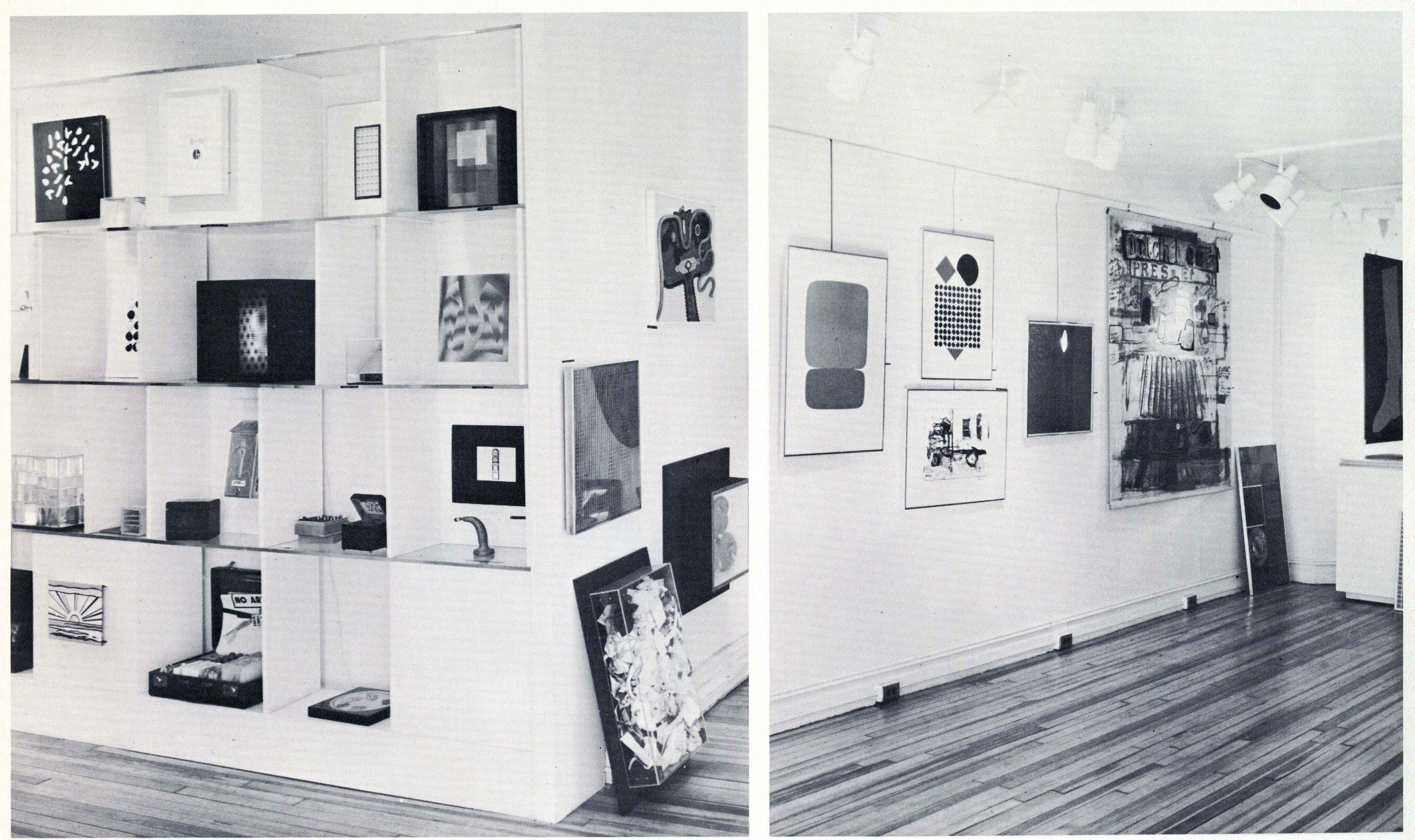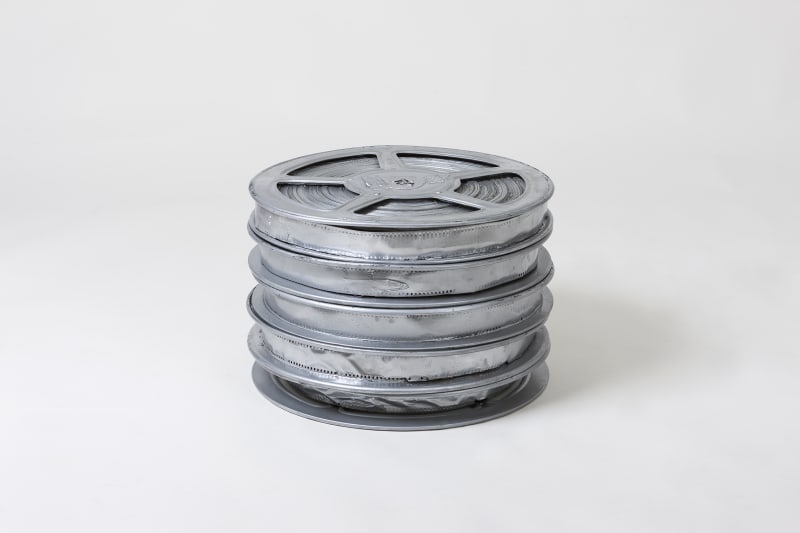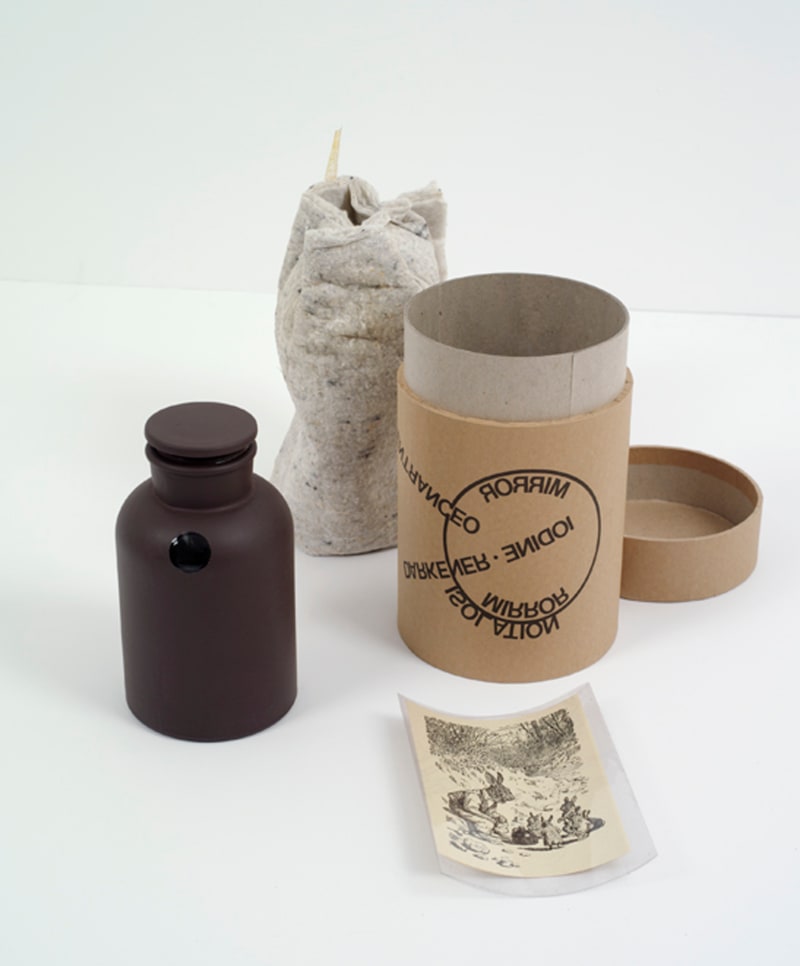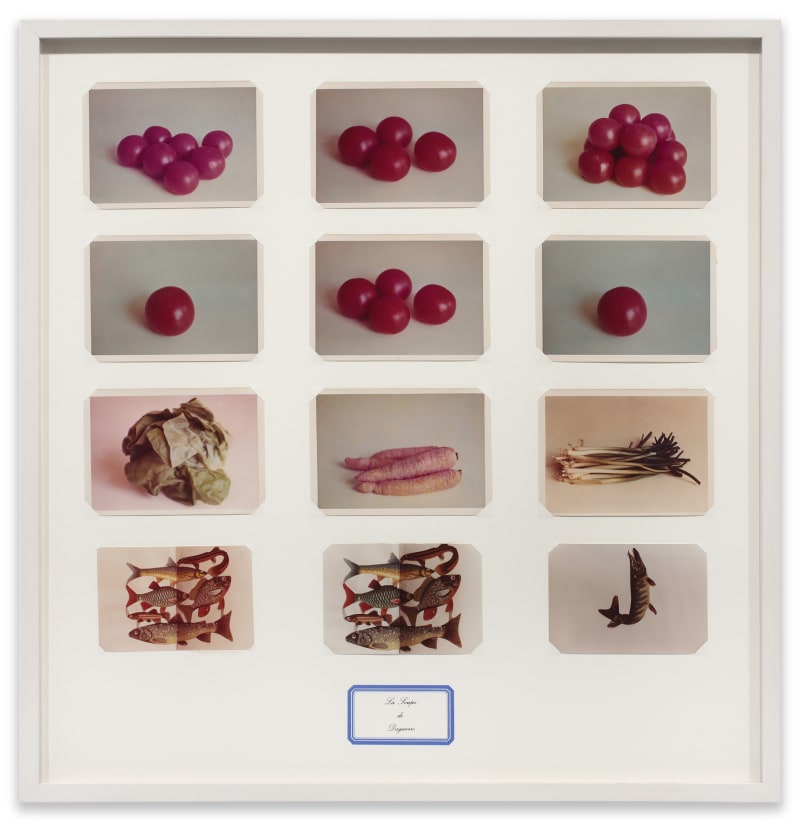Philipp Kaiser in Conversation with Dieter Schwarz

Dieter Schwarz
Transcript:
Kaiser: Dieter, we're very happy that you organized the Multiples, Inc. exhibition at Marian Goodman Gallery in New York for us. I would love to have seen you there in New York, but unfortunately, it's not possible. You're in Zurich. I'm in L.A. and we're talking about the show today that covers the years. 1965 all the way up to 1992. I remember in many conversations, Marian always mentioned the first thing that happened in her life in terms of art, and she mentioned the fundraiser she organized for the Walden School for her kids, where she invited Franz Kline and also de Kooning.
[00:00:53.950]
Kaiser: And that happened around the 1960s and shortly after, Marian Goodman started her endeavor. So the Multiples, Inc. show is on one hand, like an art historical lesson. On the other hand, the very personal history. And so maybe we should start with the personal history. Can you elaborate a little bit how everything started?
[00:01:14.890]
Schwarz: Well, everything has a prelude, has a prehistory. And in the case of Multiples, it was the so-called Betsy Ross Flag and Banner company, which was founded in 1963 by a group of people, mainly by Barbara Kulicke, with the idea to produce, to commission banners from artists banners to decorate homes, to sell banners instead of paintings or drawings, to talk to customers, to collectors. And very soon, in 1964, Marian joined this group because she was a friend of Kulicke's and Marian had this background.
[00:01:50.530]
Schwarz: She had done this small show at the school with Franz Kline, which sold out, which was a success. She had done a little portfolio of very cheap prints. She was looking as a graduate from Columbia, she was looking for a place in the art world, a place where she could make a living for her and her two children. So this was difficult because museums didn't hire women at the time. The gallery world was also very closed and Barbara Kulicke's invitation to collaborate with the Betsy Ross Flag and Banner Company was like an entry into this new world.
Schwarz: And this company lasted until 1965 mostly. But the production of banners went on. And in 1965, the same group of people founded Multiples, Inc. and Marian was the driving force behind this. She was speaking to European artist Daniel Spoerri who had launched such an edition a few years ago in Paris. And she got it together and the five of them started. But soon after they were only three left and Marian became more and more the head, the face, of Multiples.
Kaiser: I think it's really interesting. The multiple as such, was very popular, especially in the late 60s and early 70s, and I'm sure we will talk about that. But what Marian once said is also that the notion of the multiple or the reason why she was interested in multiples was because it was very close to a socialist idea that art should be accessible. And maybe before we start talking about the history of the multiples and why the multiples became all of a sudden so popular in the 60s, what is the backstory or how did it how did the idea and the notion of reproductive art start?
[00:03:29.650]
Schwarz: I mean, the idea that art can be reproduced, multiplied, distributed in many ways is quite old since the fact that you can cast sculptures, for instance, or that you're doing prints. And this has been an age-long history, but mainly in the early 20th century, when this generation of artists of Modernist artists came up. The idea was close to have not only an original work, the original work was less of importance, but to have a work which from the beginning was conceived as something which could be distributed to a new audience.
[00:04:03.460]
Schwarz: And maybe one of the great examples is Marcel Duchamp, who conceived of a kind of a 'museum in a box' with his whole oeuvre and every work of his was reproduced for this project. This was like a prototype in the 30s and 40s, which he did, and then, of course, came into in the early 60s or in the late 50s. The idea of the kinetic artwork: the artwork which would be moving, which people could change, modify, transform and so on.
[00:04:35.950]
Schwarz: And Daniel Spoerri in Switzerland or in Paris at the time, he founded an edition where every work was multiplied, but at the same time it was different. Every copy of the work was different from the other. And the artist had to think of works which could be easily multiplied at the same time, modified by the users, by the purchasers. And I think this was a quite a revolutionary idea, not only to have the multiplication, but also a work which was transformable, and I think this was very influential, these new Spoerri editions multiples were shown in the Museum of Modern Art in 1965, and Marian and her friends, of course, were seeing these things and they wanted to distribute and to introduce them to the U.S. This was one of the first elements which triggered the idea of doing a Multiples company.
Kaiser: I think it's really interesting that you mentioned Marcel Duchamp because Marcel Duchamp in 1963, he had the big retrospective on the West, on the West Coast in Pasadena. And then a year later, Arturo Schwarz released all the multiples, the editions of the readymades he made. And I think I also know that Marian Goodman, when she started with Multiples Inc., she was contacting Marcel Duchamp and went to his home and asked him if he's willing to do another multiple for her.
[00:05:58.390]
Kaiser: But he was done after Arturo Schwarz. Do you know more about that, or do you think Marcel Duchamp, his multiples history of that or revival of the 60s, had to do also with the start and the advent of Multiples, Inc.?
[00:06:16.080]
Schwarz: Of course, he was the father figure, who was still present, and even he was in New York. And the other father figure was Man Ray, who was not in New York, both in Paris, but the man who accepted to do a multiple for this young company in 1966, or at least one of the father figures was really present from the beginning with this new edition.
[00:06:37.960]
Kaiser: It's interesting that Marian, she opened the space in 1965 on Madison Avenue and it was one of the first Multiples galleries. Let's maybe talk about the first release is one of the most prominent ones that we still talk about or people still talk about today is Four on Plexiglas from 1966. She asked for artist Philip Guston, Barnett Newman, Claes Oldenburg and Larry Rivers, a quite eclectic mix to to create four works or like one to work each on Plexiglas.
[00:07:12.100]
Kaiser: I think what's really remarkable about that, this is kind of the starting point of her career as a multiple producer. And I think what's really remarkable is that it's extremely eclectic, it's like Abstract Expressionism and Pop Art coexisting at the same time. That's one thing. But then on the other hand, also it feels like the four multiples are extremely powerful and works of art as such and not supplementary in any way. Can you talk a little bit about how it started with the Four on Plexiglas and what it meant at the time?
[00:07:47.740]
Schwarz: Well, the interesting thing is when the Multiples Gallery opened in December 1965, Multiples, the company, didn't have its own editions. All they were showing at this opening exhibition were multiples which were already produced by other New York editions or works imported from Europe or just works which they had like jewelry from Kulicke and so on. So at the opening, nothing of their own was present. And of course, it was urgent to do something.
Schwarz: And they started at the same time to commission these four artists. And I think that the selection is a very erratic selection of artists: Philip Guston, Barnett Newman, Larry Rivers and Claes Oldenberg. It mostly came from the acquaintances and friendships Marian already had with artists - because her thing was [with the banners] to contact the artists, to work with the artists, and she was the closest to the artists. And so she selected from her circle these four. And Newman and Guston, of course, were very far from Plexiglas.
[00:08:54.880]
Schwarz: This was not their material. They were used to canvas and to oil paint. But they took up the challenge and they produced two works, which were silkscreens on Plexiglas surfaces. As for Larry Rivers, who did a kind of a collage, was already closer. And even for Oldenburg, who did a vacuum-formed type work, I mean, he used the full range of the possibilities of this new material. And Plexiglas was really the material of the 60s and early 70s.
![[00:09:25.300] Schwarz: You can count endless - the artists which have used this material. It was really in fashion because...](https://artlogic-res.cloudinary.com/w_1400,h_1400,c_limit,f_auto,fl_lossy,q_auto/artlogicstorage/mariangoodman/images/view/162e0244f51de63428c6d4a4c2224707j.jpg)
Schwarz: You can count endless - the artists which have used this material. It was really in fashion because also it was so far away from classical painting materials. I think it was cold, it was smooth, it was really the contrary of what had been used before. And funny, just to tell these anecdotes among the four artists chosen, Oldenburg when he received the edition of "Four on Plexiglas," he used the Guston Plexiglas as a palette to work. He used it as a studio material. He didn't consider it art.
Kaiser: Do you know more about where the multiples were made and who was working on them and how high the edition was at the time and if they produced all of them?
Schwarz: Once they started really producing in 1966 they had to find manufacturers because as I said, these were not art materials. This was Plexiglas, this was cloth, this was ... various metals. There was this new printing technique of silkscreen, which still had to be a little bit established.
[00:10:25.960]
Schwarz: And Marian and her colleagues were going through Manhattan, and Manhattan was still a wonderful place. Think of Canal Street to find all kinds of materials of stuff of small manufacturers which were far from the art world. So, for instance, when they were doing the jewelry in 1968 with Roy Lichtenstein and Jack Youngerman, they found a manufacturer who did batches for the U.S. Army and he did this jewelry for them. So you see how far they go.
![[00:10:54.130] Kaiser: Well, I think 'Four on Plexiglas' was kind of the beginning. One very important and also prominent multiples...](https://artlogic-res.cloudinary.com/w_1400,h_1400,c_limit,f_auto,fl_lossy,q_auto/artlogicstorage/mariangoodman/images/view/2c04f3f932b09f927cca25983b4efb28j.jpg)
[00:10:54.130]
Kaiser: Well, I think "Four on Plexiglas" was kind of the beginning. One very important and also prominent multiples group that she created was a box. It was a multiples box titled "Artists and Photographs" in 1970. Unfortunately, commercially, it wasn't successful at all and it took too much storage space. But what was remarkable about it was Marian kind of captured, by inviting nineteen artists, who use photography in a different way, or have a different attitude towards photography, and are mostly conceptual artists and land artists, a moment in time. That was remarkable. And it actually was finished before Kynaston McShine's famous “Information” show at MoMA opened. It was like an early attempt to also distribute a high number of editions out in the world.
Schwarz: When they did multiples between 1966 and 1970, the artists they chose were, on the one hand, the Pop artists, and on the other hand, they were the Op Art artists, which had been featured in "The Responsive Eye" exhibition at the Museum of Modern Art in 1965. And for the Op artists and for the Pop artists, the new medium of a box, doing a multiple in a box-like form was really wonderful.
A box could represent so many things; you could pack so much into a box. There were very few prints, most of things were three-dimensional, were object-like and I think this really fulfills the needs and the ideas of the artists of that generation. When Marian conceived "Artists & Photographs," she had artists of a new generation, a generation which was already after Pop and after Op Art and after all these 60s tendencies. And these artists had no use for a box or a kind of a screen or whatever, these artists were looking for new means for new media.
They were like going beyond the categories which art had before of three dimensional, two dimensional and so on. And she discovered, quite rightly, that most of them had an interest in photography. But contrary to classical photography, where you have a vintage print in a frame, these artists were using photography like a brush or like a hammer and a nail as an instrument, as a tool. And for this, they didn't need an expensive kind of reproduction.
![[00:13:25.690] They could use simple offset prints in order to distribute their works into the world. So for the box,...](https://artlogic-res.cloudinary.com/w_1400,h_1400,c_limit,f_auto,fl_lossy,q_auto/artlogicstorage/mariangoodman/images/view/563d6ccdce4a75086561b61f64ac85a7j.jpg)
They could use simple offset prints in order to distribute their works into the world. So for the box, "Artists & Photographs," Marian had, including artists who did little booklets like Edward Ruscha or Dan Graham, who wrote an essay illustrated by his new work, Alan Kaprow documenting his happening work, or Robert Smithson using a photograph which was torn apart in order to demonstrate his ideas about entropy. Sol LeWitt had a photograph which slowly developed when you pulled it out of its envelope.
Schwarz: Robert Morris had documentation of his show at the Castelli warehouse. So everyone used photography in a different sense. But the photographs could be, as I said, cheaply reproduced and put into this box. And this box with all these works together cost $100. So it was a lot of content for a little money, but it was not so much appreciated. The box was there, but commercially it was very hard to bring 1200 copies into the world. The audience, still, was not there for such a number of examples, I think.
Kaiser: I think what you mentioned is really interesting that the eclecticism also of Marian's practice in the very beginning and of course the 60s were a very transitional period where Op Art, you mentioned "The Responsive Eye," Post Minimalism, Minimalism, Pop Art, you have like that's the art history lesson I was talking about in the very beginning that you have with all the multiples. If you look at the history, what's interesting is shortly before Marian released “Artists & Photographs” in 1968, she went to Europe to see Documenta 4 together with gallerist Paul Maenz, who was a friend of hers and who also designed the logo and then later became a gallerist. And that trip in 1968, I think was really meaningful for her, because after that, especially when Marian opens the gallery and we will talk about that, she has this special focus on European artists or let's say on the transatlantic exchange between the artists.
Kaiser: Going back to "Artists & Photographs," five years after the box, she published a portfolio with seven artists and the majority of the artists — four — came from Europe and that was in 1975. And it's when when we look back and think about Europe in the 70s, we know that the standardized narrative is that the Beuys exhibition at the Guggenheim in '79 was like the marker when for example, Beuys of course there was René Block before that, but that was the moment when like German art reappeared on the American continent and I think Marian was really ahead of the curve.
Kaiser: Do you think this portfolio has some special meaning in terms of what Marian's gallery will stand for and for the future?
Schwarz: Well, the exchange on the level of multiples between Europe and the U.S. was very strong, very important. As I said before, Daniel Spoerri was the one who brought the Multiples to the United States. And then there were numerous editions which were created, which were born in Europe in the late 60s and early 70s. And Marian distributed quite a number of these European editions. Also, there was a Multiple Art Fair in Berlin in 1972 and 1973, and Multiples was represented there. And I think on these occasions, very important friendships were cemented with Europe.
On the one hand, there was the Surrealist critic, Nicolas Calas, and his wife, who were based in New York. They were close friends of Marian's. And they brought in, I think, a little bit of the 'Paris of the Surrealist' spirit. You can see this in the “Mirrors of the Mind” portfolio where Man Ray again and Meret Oppenheim appear, and on the other hand, there was René Block in Berlin. Marian distributed his editions, and in 1973, Block approached Marian and proposed to her to co-produce the Joseph Beuys multiple.
And I think this was the first appearance of Beuys on the American market because before he was maybe a mystery, a rumor, but he was not really there. And through René Block, he told me for him it was too expensive to produce this quite ambitious multiple. And with the help of Multiples, they could do it together. And Beuys was shown in Berlin, as usual, but then as well, newly in New York. And I think the friendship with René Block also brought up the friendship with Richard Hamilton in England. And Richard Hamilton, who had also a certain presence in the United States (with his show in the Guggenheim in 1973) and through Richard Hamilton, Marian got to know Marcel Broodthaers because Hamilton was very close to Broodthaers and I think that was a main introduction. Marian did not choose to show Hamilton at her gallery, but she chose afterwards to show Marcel Broodthaers posthumously when she opens, then, her real gallery in 1977.
Kaiser: Dieter, the gallery published a wonderful catalogue with a very comprehensive essay and a list of all the multiples published. Let's talk a little bit about the exhibition. What can you see in the exhibition? How many multiples are assembled? How was the exhibition organized?
[00:18:57.390]
Schwarz: I mean, the exhibition shows a selection of the Multiples works, but luckily there is the catalogue because it has not only the history of the editions, but it also has a complete catalogue of all the editions. And I think there are hundreds and hundreds. And I think up to now nobody has covered this. And this will be a real resaource to work with if you have to look up an artist - you will find now all the precise documents in this catalogue.
Kaiser: Well, Dieter you did so much. That was fun. I would have preferred to do it in New York with a walk-through and with a personal drink afterwards.
Schwarz: Cheers, at least, on the show. Thank you. Thank you.
Multiples, Inc. at Marian Goodman Gallery | Multiples, Inc. Catologue








![[00:10:25.960] Schwarz: And Marian and her colleagues were going through Manhattan, and Manhattan was still a wonderful place. Think of...](https://artlogic-res.cloudinary.com/w_1400,h_1400,c_limit,f_auto,fl_lossy,q_auto/artlogicstorage/mariangoodman/images/view/3d2f3cfd98e27465d63d1bb506375736j.jpg)








